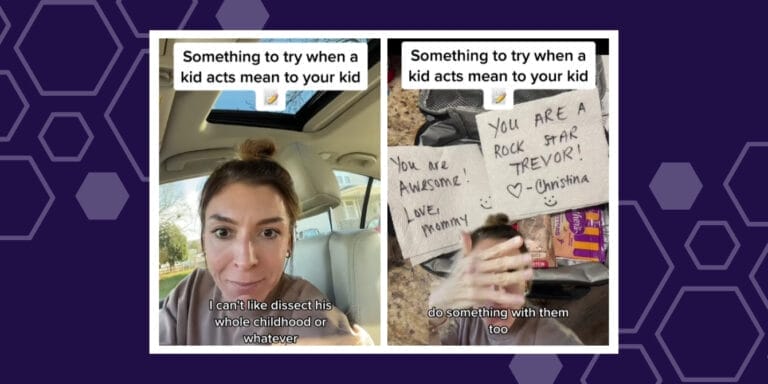3 quick, effective tips to help kids calm down

#3—Throw away the angry ball together!
Table of Contents
- Here are my three quick tips to help in those moments when emotions overwhelm kids.
- 1. Turn that Frown Upside Down!
- 2. Blow out the birthday candle!
- 3. Throw away that angry ball!
- Remember emotions aren’t bad—we don’t want to get rid of emotions, we want to regulate them. Emotions are raw energy. We have to teach our children how to harness that energy so that they can be persistent, motivated and reach their goals.
The other day my son lost it. He was gasping for breath as he cried his little heart out and all because of a box of leftover pizza. We had gone out to dinner and as we got in the car, my husband put the pizza box with our leftovers on top of the car. We drove away and (surprise!) the box flew off the top of the car.
My husband said – “uh-oh” and I reacted with an “oh-no” and my son absolutely lost it. All the way home he sobbed. In between, rasping breaths he said, “I …can’t… stop… crying!” It took us completely by surprise because first, he doesn’t love pizza all THAT much and second, it was such a little thing.
Sometimes the things that seem little to us are BIG things to them and when they get into that zone where emotions take over, they can have a hard time calming down.
Has your child ever said they can’t stop crying? Or gets so frustrated that they lash out? Or gets in a grumpy mood they can’t seem to shake?
Here are my three quick tips to help in those moments when emotions overwhelm kids.
1. Turn that Frown Upside Down!
Young children think about things as being fixed and unchangeable, and they view emotions this way too. They don’t realize or sometimes don’t remember that how they feel isn’t going to last forever.
They also need reminders that they can control their emotions.
When my son is grumpy or grouchy I always use this trick.
First, I name the emotion. I say: “You seem grumpy today. Do you remember you can turn that frown upside down? You can change that grumpy face into a happy face?” Then I demonstrate by over exaggerating a frown and then a smile. We make it a game until and he is turning that frown upside down. I follow up by saying—“You did it! You turned your frown upside down! You changed how you felt inside. Do you feel better? Now let’s have a wonderful day!” There is actually quite a bit of research which shows that forcing a smile makes you feel happier and can even reduce stress.
2. Blow out the birthday candle!
Sometimes emotions get really out of control and in the midst of crying or having a tantrum you can see your child really can’t calm down. My son has even said before “I can’t stop crying!”
In these situations, the best thing you can do is to get your child to breathe.
But when they are really upset sometimes saying “take a deep breath” isn’t enough. Breathing with them can help, especially if you practice breathing at other times. For example, one bedtime song I sing is a “relaxing song” and part of it is to take 3 deep breaths. I put my hand on his stomach and teach him to breath into his tummy so my hand goes up and down.
When kids are really upset you may need something more concrete that they can imagine to get them to breath. I’ve seen different techniques like blowing bubbles or blowing out the birthday candle. The candle has worked best for us. I hold up one finger and I say blow out the candle and breath! Once he does a few times I make my finger “fall down” and a few laughs shine through the tears. Once they are calm you can begin to work through the feelings. Breathing helps to reverse the stress response that comes with big emotions allowing children to be calm again.
3. Throw away that angry ball!
Anger and frustration can be really useful emotions in the right amount. Frustration can help kids stay on task until it is done and increase determination. But too much frustration and anger does the opposite. Most often kids are angry because their goal is somehow blocked. That Lego piece doesn’t do what they want it to do, they can’t do what they want to do because you said no (and probably for good reason) or some other obstacle.
You don’t want to view anger and frustration as negative because they can be good in the right amounts.
First, name the emotion. “You seem angry/frustrated. Is it because you can’t _______? I see a big angry ball in you! It’s too much anger! Let’s throw some of it away!” Then I demonstrate throwing an imaginary ball as hard as I can.
This helps them release a little bit of that anger by pretend throwing. Once they have done the throwing as hard as they can they usually feel a little bit better. But I don’t want them to lose the determination. So if it is something that they can do I will encourage them to try again. If it something that they shouldn’t do, I redirect them to do something else or explain why we can’t do that.
Those are my three quick tips for helping kids to calm down and regulate emotions. Once your child is calm again be sure to talk with them about the emotion they were feeling. Name the emotion and help them to understand why they felt that way. Then talk about what they might try next time or use it as an opportunity to understand your child better and what their triggers might be.
Here’s a free printable to help you and your child remember the strategies.
Remember emotions aren’t bad—we don’t want to get rid of emotions, we want to regulate them. Emotions are raw energy. We have to teach our children how to harness that energy so that they can be persistent, motivated and reach their goals.
A version of this article was originally published on Nurture and Thrive.


































